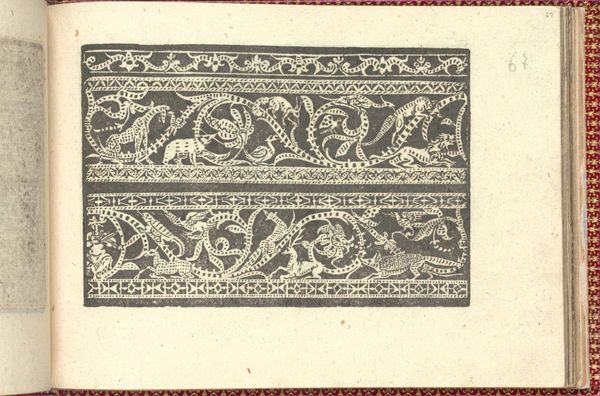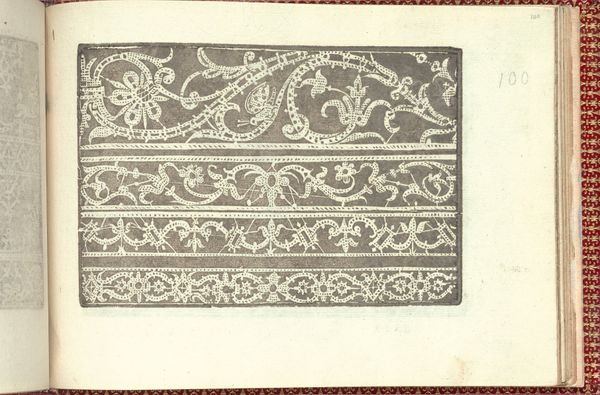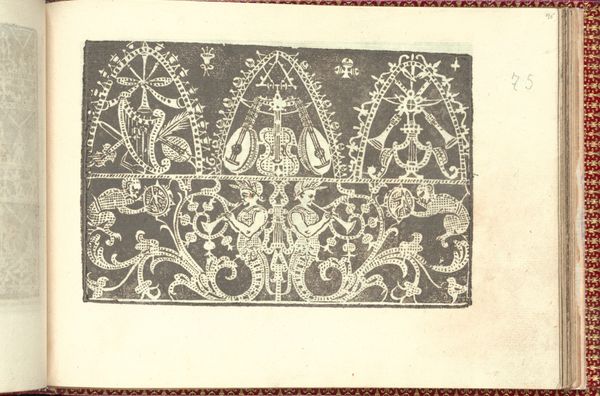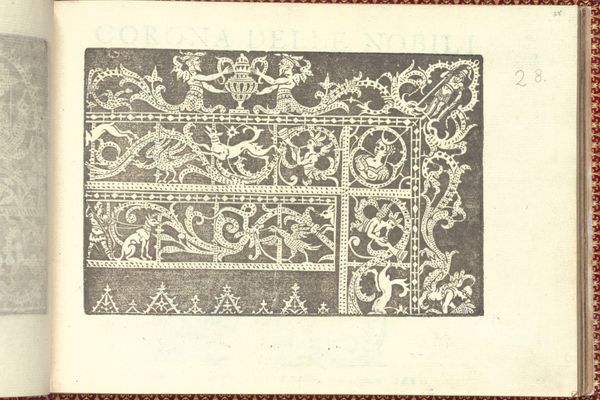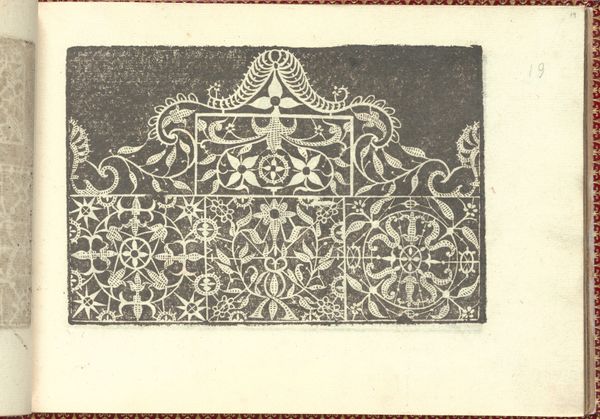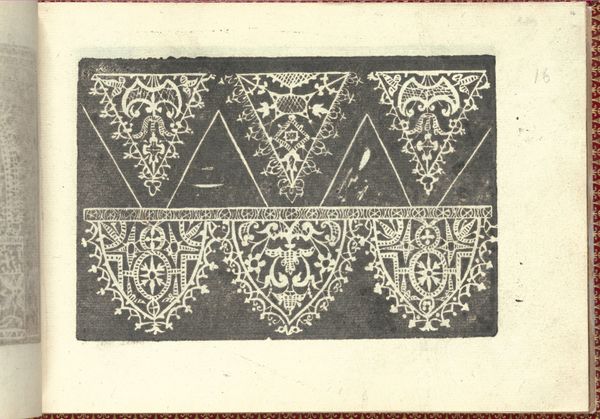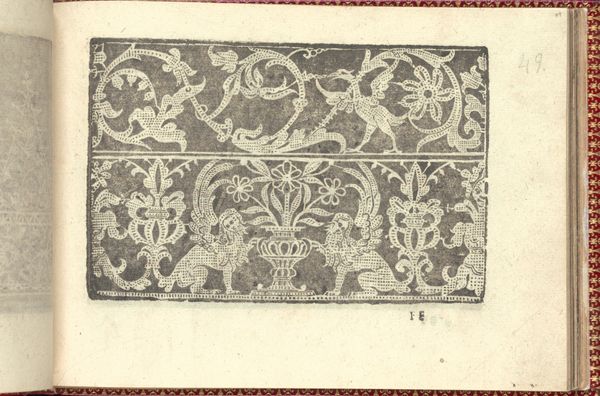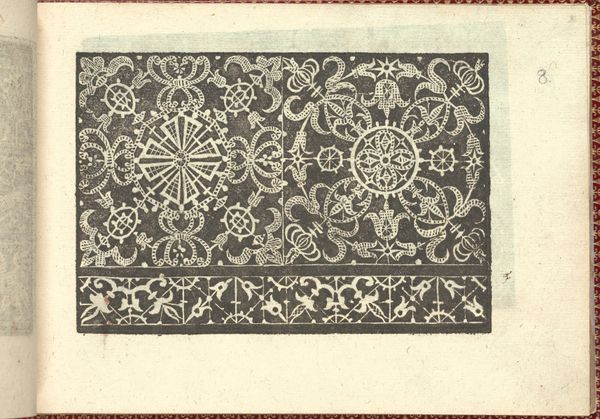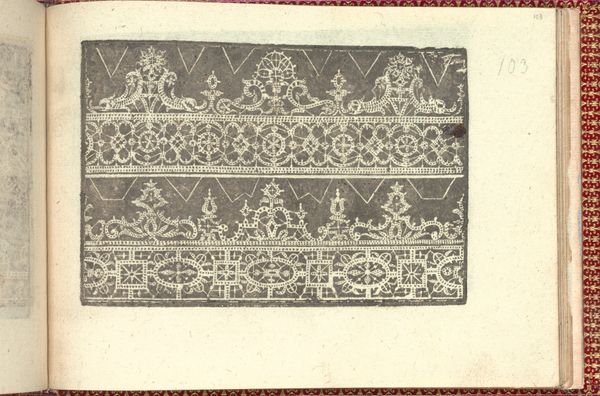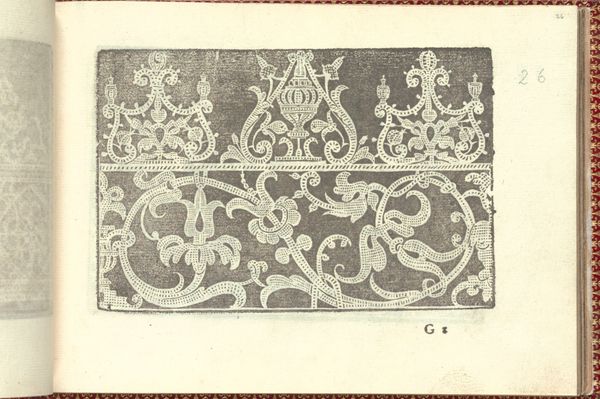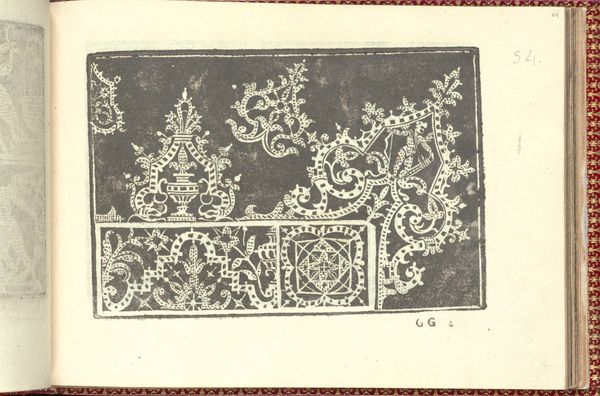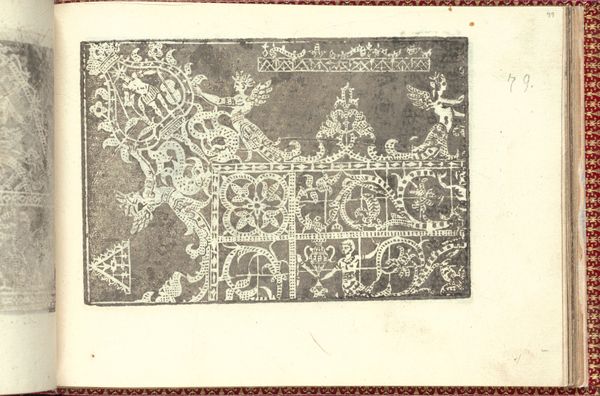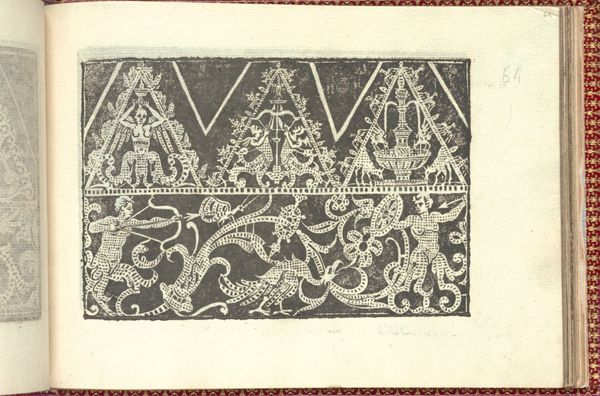
Corona delle Nobili et Virtuose Donne: Libro I-IV, page 92 (recto) 1601
0:00
0:00
drawing, graphic-art, print, engraving
#
drawing
#
graphic-art
# print
#
book
#
mannerism
#
figuration
#
11_renaissance
#
geometric
#
engraving
Dimensions: Overall: 5 1/2 x 7 11/16 in. (14 x 19.5 cm)
Copyright: Public Domain
This is a page from Cesare Vecellio’s “Corona delle Nobili et Virtuose Donne”, a book of patterns likely made sometime around 1600. Here, symbols intertwine, speaking volumes about societal ideals. Two dragons flank a vase crowned with a divine figure, all within a triangular frame adorned with stylized botanicals. Dragons, often guardians of treasure, here protect the virtues rising like flowers, nurtured by the vessel of noble womanhood. The androgynous figure atop suggests an ideal of perfected humanity, drawing from classical and early Christian imagery where androgyny symbolized spiritual completeness. The dragon motif echoes through centuries, from ancient Mesopotamian depictions of power to medieval European heraldry, each era imbuing it with new layers of meaning. Consider its parallel in the Far East, where the dragon embodies wisdom and benevolent strength, a stark contrast to its often monstrous portrayal in the West. This image resonates on a deeper, perhaps subconscious, level, tapping into our collective memory of mythical creatures that embody both our fears and aspirations. Such visual language demonstrates how symbols persist, evolve, and resurface, taking on new meanings while carrying echoes of the past.
Comments
No comments
Be the first to comment and join the conversation on the ultimate creative platform.

